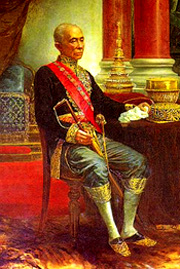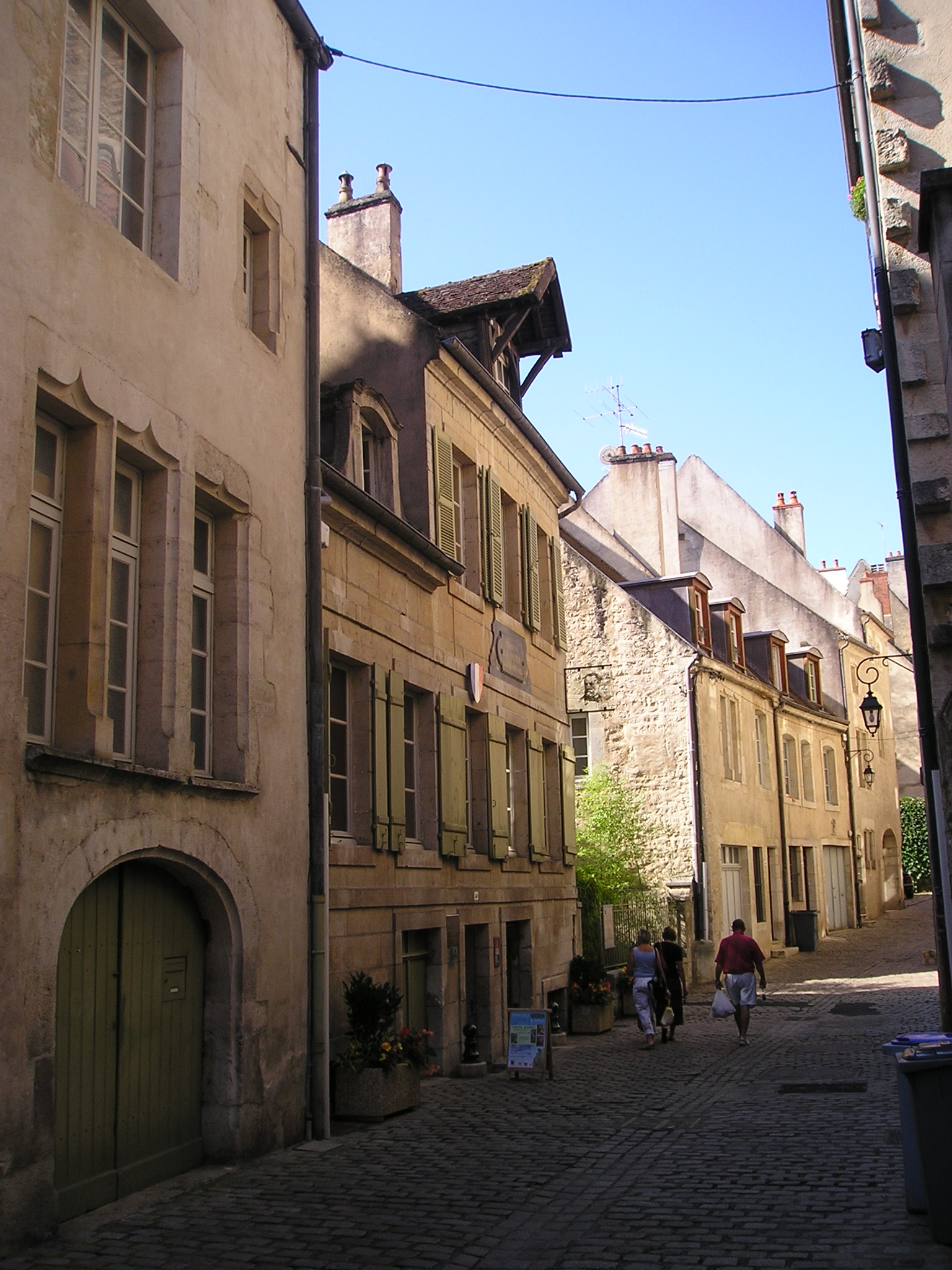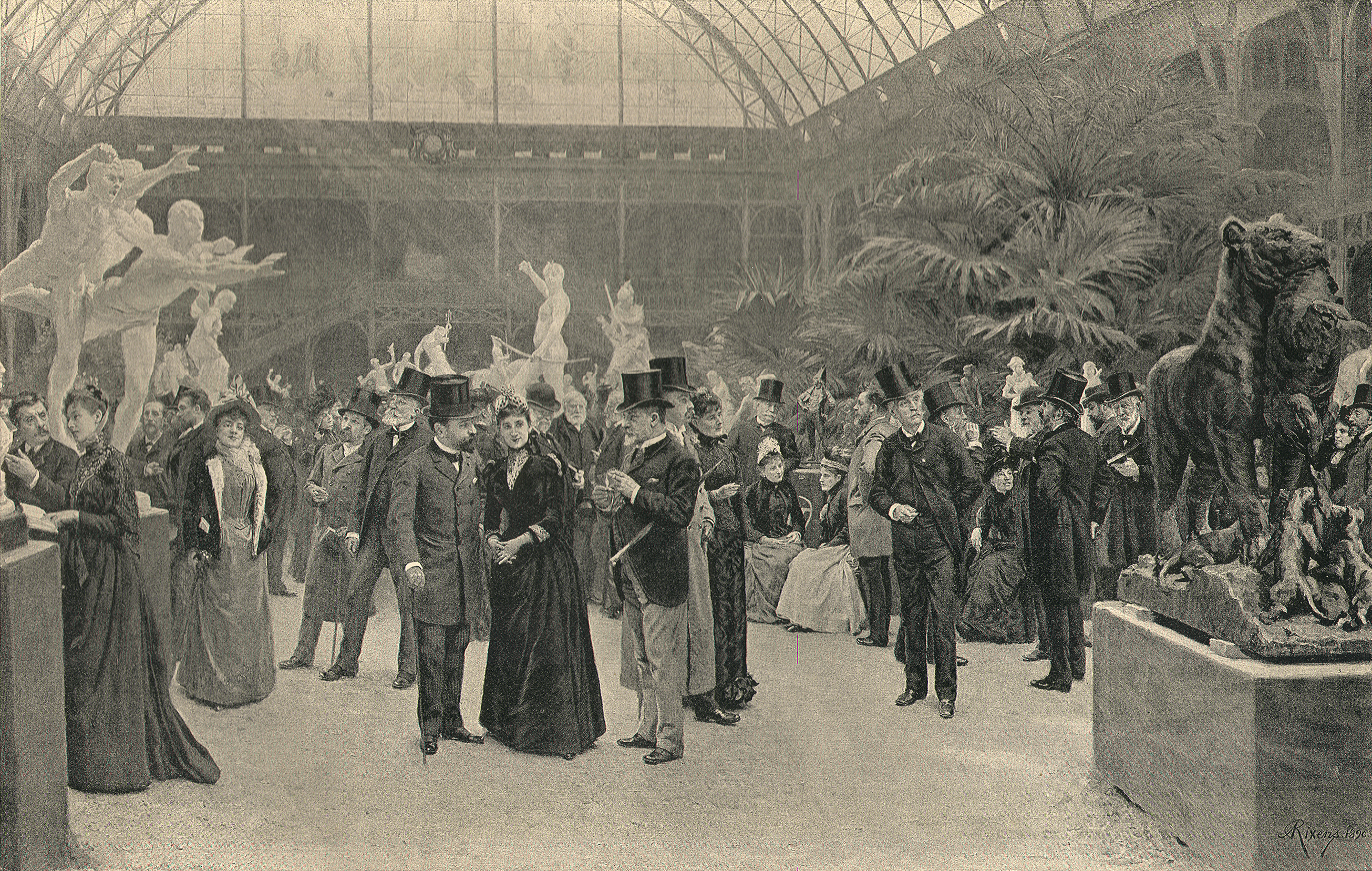|
Antonin Carlès
Jean-Antonin Carles (1851 – 18 February 1919) was a French sculptor. Born in Gimont, Carlès began his studies in Marseille and then successively to the École des Beaux-Arts de Toulouse and that of Paris. He was a pupil of François Jouffroy (1806–1882) and Ernest-Eugène Hiolle (1834–1886), he won the Grand Prix de l'Exposition Universelle (1889), Exposition Universelle in 1889. He belonged to the Society of French Artists. Several models of his sculptures (''La Jeunesse'', ''Retour de chasse'') are kept at the Musée des Jacobins d'Auch (Gers). He died in Paris. Main works * ''La Cigale'', plaster, Salon de 1878, Musée de Lectoure (Gers). * ''Le Mendiant'', plaster, Salon de 1879, Musée des Jacobins d'Auch (Gers). * Charles VII, stone, 1879, facade of the city hall of Compiègne (Oise). * ''Abel'', plaster, Musée des Beaux-Arts d'Angers. * ''Abel'', marble, Musée d'Orsay. * ''La Jeunesse'', plaster, Musée Camille Claudel, Nogent-sur-Seine. * ''La Jeunesse'', ... [...More Info...] [...Related Items...] OR: [Wikipedia] [Google] [Baidu] |
Sculptor
Sculpture is the branch of the visual arts that operates in three dimensions. Sculpture is the three-dimensional art work which is physically presented in the dimensions of height, width and depth. It is one of the plastic arts. Durable sculptural processes originally used carving (the removal of material) and modelling (the addition of material, as clay), in stone, metal, ceramic art, ceramics, wood and other materials but, since Modernism, there has been almost complete freedom of materials and process. A wide variety of materials may be worked by removal such as carving, assembled by welding or modelling, or Molding (process), moulded or Casting, cast. Sculpture in stone survives far better than works of art in perishable materials, and often represents the majority of the surviving works (other than pottery) from ancient cultures, though conversely traditions of sculpture in wood may have vanished almost entirely. In addition, most ancient sculpture was painted, which h ... [...More Info...] [...Related Items...] OR: [Wikipedia] [Google] [Baidu] |
Henri Cernuschi
Henri Cernuschi (; ; 19 February 1821 – 11 May 1896) was a major French-Italian banker, economist and Asian art collector, who began public life as a politician in Italy in 1848–1850. Life Cernuschi was born of wealthy parents at Milan, and was destined for the legal profession. During his studies he became involved in the revolutionary movement. He played a conspicuous part in the insurrection at Milan in 1848, and also in the Roman Republic (1849), Roman Republic, where he had a seat in the Assembly. On the collapse of the revolutionary government he was arrested (1850), but managed to escape to France, where he engaged in commerce and banking, became naturalized, and acquired a large fortune. He took a prominent part in opposing the Socialist movement, and in April 1870, having subscribed a large sum to the funds of a committee formed to combat the Napoleonic plebiscite, had to leave the country. In September the formation of the French Third Republic, Third Republic en ... [...More Info...] [...Related Items...] OR: [Wikipedia] [Google] [Baidu] |
1919 Deaths
Events January * January 1 ** The Czechoslovak Legions occupy much of the self-proclaimed "free city" of Bratislava, Pressburg (later Bratislava), enforcing its incorporation into the new republic of Czechoslovakia. ** HMY Iolaire, HMY ''Iolaire'' sinks off the coast of the Hebrides; 201 people, mostly servicemen returning home to Lewis and Harris, are killed. * January 2–January 22, 22 – Russian Civil War: The Red Army's Caspian-Caucasian Front begins the Northern Caucasus Operation (1918–1919), Northern Caucasus Operation against the White Army, but fails to make progress. * January 3 – The Faisal–Weizmann Agreement is signed by Faisal I of Iraq, Emir Faisal (representing the Arab Kingdom of Hejaz) and Zionism, Zionist leader Chaim Weizmann, for Arab–Jewish cooperation in the development of a Jewish homeland in Palestine (region), Palestine, and an Arab nation in a large part of the Middle East. * January 5 – In Germany: ** Spartacist uprising in ... [...More Info...] [...Related Items...] OR: [Wikipedia] [Google] [Baidu] |
1851 Births
Events January–March * January 11 – Hong Xiuquan officially begins the Taiping Rebellion in China, one of the bloodiest revolts that would lead to 20 million deaths. * January 15 – Christian Female College, modern-day Columbia College, receives its charter from the Missouri General Assembly. * January 23 – The flip of a coin, subsequently named the Portland Penny, determines whether a new city in the Oregon Territory will be named after Boston, Massachusetts, or Portland, Maine, with Portland winning. * January 28 – Northwestern University is founded in Illinois. * February 1 – '' Brandtaucher'', the oldest surviving submersible craft, sinks during acceptance trials in the German port of Kiel, but the designer, Wilhelm Bauer, and the two crew escape successfully. * February 6 – Black Thursday occurs in Australia as bushfires sweep across the state of Victoria, burning about a quarter of its area. * February 12 – ... [...More Info...] [...Related Items...] OR: [Wikipedia] [Google] [Baidu] |
Louis Pasteur
Louis Pasteur (, ; 27 December 1822 – 28 September 1895) was a French chemist, pharmacist, and microbiologist renowned for his discoveries of the principles of vaccination, Fermentation, microbial fermentation, and pasteurization, the last of which was named after him. His research in chemistry led to remarkable breakthroughs in the understanding of the causes and preventions of diseases, which laid down the foundations of hygiene, public health and much of modern medicine. Pasteur's works are credited with saving millions of lives through the developments of vaccines for rabies vaccine, rabies and anthrax vaccine, anthrax. He is regarded as one of the founders of modern bacteriology and has been honored as the "father of bacteriology" and the "father of microbiology" (together with Robert Koch; the latter epithet also attributed to Antonie van Leeuwenhoek). Pasteur was responsible for disproving the doctrine of spontaneous generation. Under the auspices of the French Aca ... [...More Info...] [...Related Items...] OR: [Wikipedia] [Google] [Baidu] |
Salon Des Artistes Français
The Salon (), or rarely Paris Salon (French: ''Salon de Paris'' ), beginning in 1667 was the official art exhibition of the in Paris. Between 1748 and 1890 it was arguably the greatest annual or biennial art event in the Western world. At the Salon of 1761, thirty-three painters, nine sculptors, and eleven engravers contributed. Levey, Michael. (1993) ''Painting and sculpture in France 1700–1789''. New Haven: Yale University Press, p. 3. From 1881 onward, it was managed by the Société des Artistes Français. Origins In 1667, the royally sanctioned French institution of art patronage, the (a division of the Académie des beaux-arts), held its first semi-public art exhibit at the Salon Carré. The Salon's original focus was the display of the work of recent graduates of the École des Beaux-Arts, which was created by Cardinal Mazarin, chief minister of France, in 1648. Exhibition at the Salon de Paris was essential for any artist to achieve success in France for at least ... [...More Info...] [...Related Items...] OR: [Wikipedia] [Google] [Baidu] |
Musée Du Luxembourg
The () is a museum at 19 in the 6th arrondissement of Paris. Established in 1750, it was initially an art museum located in the east wing of the Luxembourg Palace (the matching west wing housed the Marie de' Medici cycle by Peter Paul Rubens) and in 1818 became the first museum of contemporary art. In 1884 the museum moved into its current building, the former orangery of the Palace. The museum was taken over by the Ministry of Culture (France), French Ministry of Culture and the French Senate in 2000, when it began to be used for temporary exhibitions, and became part of the in 2010. History From 1750 to 1780 it was the first public painting gallery in Paris, displaying the King's collection which included Titian's ''Madonna of the Rabbit'', Da Vinci's ''Holy Family'' (either ''The Virgin and Child with Saint Anne (Leonardo), The Virgin and Child with St. Anne'' or ''Virgin of the Rocks'') and nearly a hundred other Old Master works now forming the nucleus of the Louvre. In 18 ... [...More Info...] [...Related Items...] OR: [Wikipedia] [Google] [Baidu] |
Le Creusot
Le Creusot () is a Communes of France, commune and industrial town in the Saône-et-Loire Departments of France, department, Regions of France, region of Bourgogne-Franche-Comté, eastern France. The inhabitants are known as Creusotins. Formerly a mining town, its economy is now dominated by metallurgical companies such as ArcelorMittal, Schneider Electric, and Alstom. Since the 1990s, the town has been developing its tourism credentials. Its main attraction is the Parc des Combes. The Creusot steam hammer is exposed as a tourist attraction in a square at the entrance to the town from the south. Le Creusot is also the second educational centre of the Bourgogne (after Dijon), with its Institut universitaire de technologie, IUT and the Condorcet university centre. History In 1836, iron ore mines and forges around Le Creusot were bought by Adolphe Schneider and his brother Eugène Schneider, Eugène. They developed a business in steel, railways, armaments, and shipbuilding. The S ... [...More Info...] [...Related Items...] OR: [Wikipedia] [Google] [Baidu] |
Agen
Agen (, , ) is the prefecture of the Lot-et-Garonne department in Nouvelle-Aquitaine, Southwestern France. It lies on the river Garonne, southeast of Bordeaux. In 2021, the commune had a population of 32,485. Geography The city of Agen lies in the southwestern department of Lot-et-Garonne in the Nouvelle-Aquitaine region. The city centre lies on the east bank of the river Garonne, the Canal de Garonne flows through the city, approximately halfway between Bordeaux and Toulouse . Climate Agen features an oceanic climate (''Cfb'') in the Köppen climate classification and according to the latest temperature numbers borders a humid subtropical climate (''Cfa''). According to the Trewartha climate classification the climate is now humid subtropical (''Cf''). Winters are mild and feature cool to cold temperatures while summers are mild and warm. Rainfall is spread equally throughout the year; however, most sunshine hours are from March–September. Toponymy From Occitan ... [...More Info...] [...Related Items...] OR: [Wikipedia] [Google] [Baidu] |
Palais De L'Élysée
{{disambig, surname ...
Palais () may refer to: * Dance hall, popularly a ''palais de danse'', in the 1950s and 1960s in the UK * ''Palais'', French for palace **Grand Palais, the Grand Palais des Champs-Elysées **Petit Palais, an art museum in Paris * Palais River in the French ''département'' of Deux-Sèvres * Palais Theatre, historic cinema ("picture palace") in Melbourne, Australia *Richard Palais (born 1931), American mathematician *Le Palais, a commune in Morbihan departement, France See also *Palais Royal (other) * Palai (other) * Palace (other) * Palas (other) A palas is that part of a medieval imperial palace or castle which contains the great hall and other prestigious state rooms. Palas may also refer to: Places * Palas, Iran, a village in Iran * Palas, a former commune, nowadays a neighbourhood in ... [...More Info...] [...Related Items...] OR: [Wikipedia] [Google] [Baidu] |
Armand Fallières
Clément Armand Fallières (; 6 November 1841 – 22 June 1931) was a French statesman who was President of France from 1906 to 1913. Clément Armand Fallières was a symbol of republicanism in the French Third Republic. He was born into a middle-class family in Lot-et-Garonne and became a lawyer and a Republican politician. He held various ministerial posts and was briefly prime minister in 1883. He had a moderate and sensitive approach to the religious problem, but was tough in dealing with labor unrest. In 1906, he became president of France, defeating Paul Doumer. According to David Bell, he had a talent for spotting political talent. His presidency was marked by his genial and reassuring manner, making him a popular figurehead. He was content with the procedural honors of a constitutional president and let his ministers make the decisions. His presidency emphasized the Senate's republicanism. He had the honour, though not the power, of presiding over the left-wing gove ... [...More Info...] [...Related Items...] OR: [Wikipedia] [Google] [Baidu] |
Olympe Hériot
Anne Marie Dubernet known as Cyprienne Dubernet, Madame Olympe Hériot and later Madame Roger Douine (1857 – 5 December 1945), was a French patron of the arts and philanthropist, who was made a Chevalier de la Légion d'Honneur. Biography Daughter of a wool-spinner, Anne Marie Dubernet came from a modest family in Lot-et-Garonne. She sold corsets at the Grands Magasins du Louvre and on 24 August 1887 married the director-proprietor, Olympe Hériot (1833–1899), to whom she had already borne two children. They had four children in total, including Virginie Hériot, who became a competitive sailor. In 1894 they moved to a mansion in Paris. Widowed in 1899, Anne Marie inherited her husband's fortune in accordance with his will. In 1903 she redeveloped a site of on the Rue de la Faisanderie in Paris, commissioning architect Hans-Georg Tersling to build a mansion, which she sold in 1928. In 1904 she bought a yacht, ''Ketoomba'', which she renamed ''Salvador''. She wrote ... [...More Info...] [...Related Items...] OR: [Wikipedia] [Google] [Baidu] |








